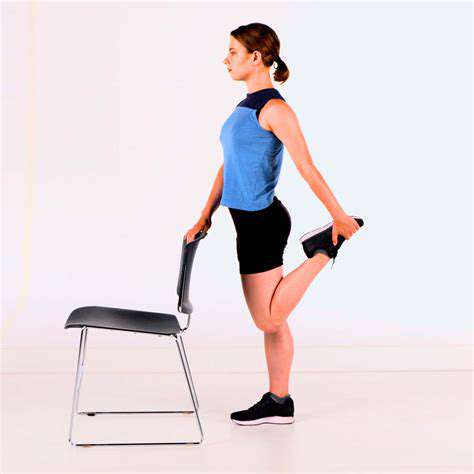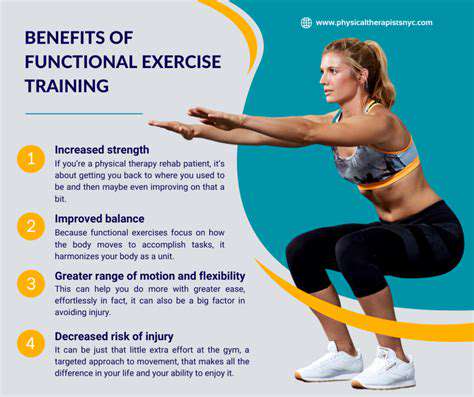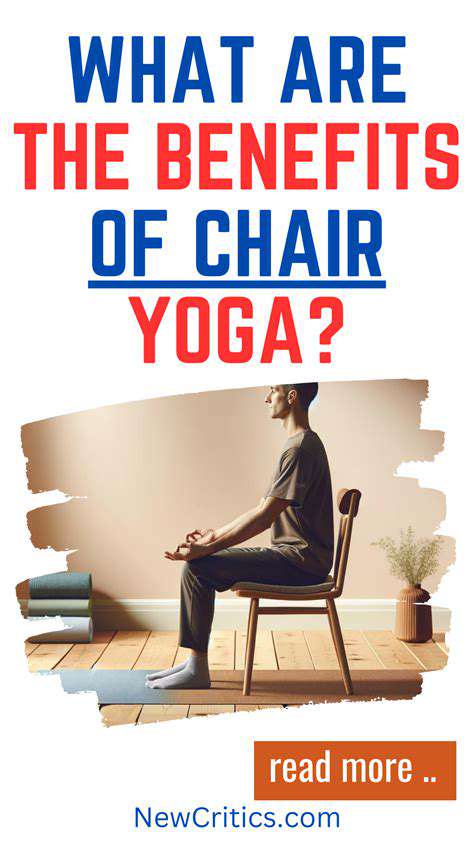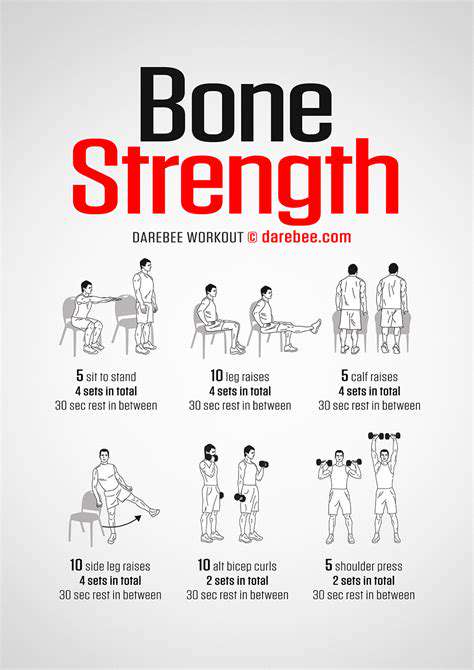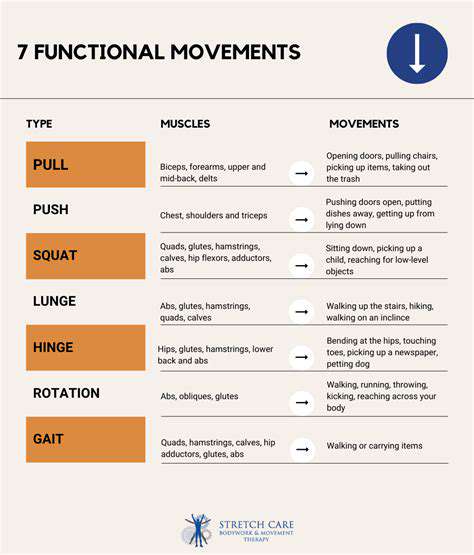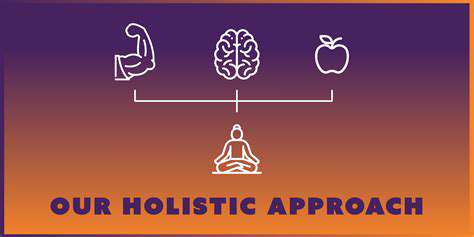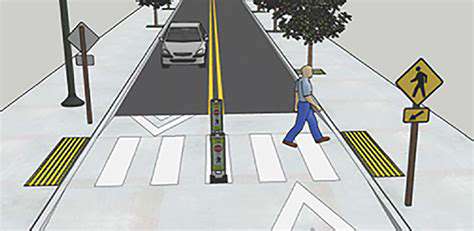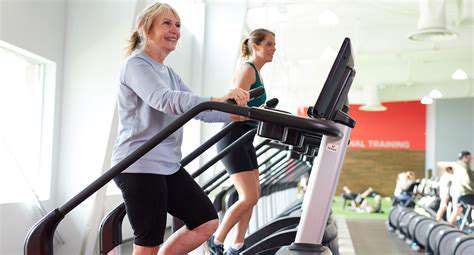Using a Chair for Enhanced Balance in Senior Yoga
Chair yoga, a fantastic exercise option for seniors, significantly improves balance and coordination. Starting with foundational poses is crucial for building strength and stability. These poses help to engage core muscles, which are essential for maintaining balance. Practicing these poses regularly will gradually improve your ability to maintain balance while standing and moving, reducing the risk of falls.
One such pose is the chair twist. Sit tall in a chair with your feet flat on the floor. Inhale, lengthen your spine, and exhale as you twist your torso to one side. Hold for a few breaths, then repeat on the other side. This gentle twist strengthens the muscles around your spine and improves flexibility, directly contributing to better balance.
Chair Yoga Poses for Strengthening Core Muscles
Core strength is a cornerstone of balance. Chair yoga offers numerous ways to strengthen these vital muscles without putting undue stress on your joints. Many poses involve engaging your abdominal and back muscles to maintain a stable posture. These poses are particularly beneficial for seniors, as they actively work to improve stability and coordination without the risk of falling.
Another effective pose is the chair forward fold. Sit tall in a chair with your feet flat on the floor. Inhale and lengthen your spine, then exhale and gently fold forward from your hips. Keep your back straight and your neck relaxed. Hold for a few breaths and return to the starting position. This pose strengthens the muscles in your back and hamstrings, contributing to better balance and overall body awareness.
Chair Yoga for Enhanced Flexibility and Range of Motion
Maintaining flexibility is key to balance and preventing falls. Chair yoga incorporates gentle stretches that improve range of motion and flexibility around joints, particularly in the hips, knees, and ankles. These stretches help to counteract the stiffness that can occur with age, making everyday movements smoother and more controlled.
Chair leg stretches are excellent for improving flexibility. Sit in a chair with your feet flat on the floor. Extend one leg out in front of you, keeping your heel on the floor. Gently bend forward from your hips, feeling the stretch in your hamstring. Hold the stretch for a few breaths, then repeat on the other side. These stretches help to improve blood flow and maintain the health of your joints, thus contributing to overall balance.
Chair Yoga for Maintaining Stability and Coordination
Chair yoga is a fantastic way to improve overall stability and coordination. Many poses require you to focus on maintaining balance and control while seated. This focus on stability strengthens your proprioceptive system, which helps your body understand its position in space. Regular practice improves your ability to react to changes in your posture or environment, thus preventing falls.
Chair-based balance exercises, such as heel-toe raises, are a great way to improve coordination. Sit in a chair with your feet flat on the floor. Slowly lift one heel off the ground, then place it back down. Repeat with the other heel. This exercise strengthens the muscles in your feet and ankles, crucial for maintaining balance while walking or performing everyday tasks. It also enhances your body's awareness of its position in space.
Sustainable practices are crucial in mitigating the impact of greenhouse gas emissions. Adopting renewable energy sources, such as solar and wind power, is a significant step toward reducing our reliance on fossil fuels. This transition not only decreases carbon emissions but also fosters a cleaner and more sustainable energy future. Implementing energy-efficient technologies in buildings and transportation further minimizes our environmental footprint.
Modifying Traditional Yoga Poses for Chair Yoga
Chair-Assisted Downward-Facing Dog
Transforming the classic downward-facing dog pose into a chair-friendly variation is surprisingly accessible and beneficial. Instead of the traditional hand placement on the floor, place your hands on the chair seat. Keep your legs straight and engaged, maintaining a slight bend in your knees if needed. This modification allows you to maintain the stretch in your hamstrings and calves while significantly reducing the strain on your wrists and back, which is especially helpful for those with injuries or limited flexibility. This chair-modified pose is fantastic for building strength and flexibility in the lower body, while also promoting a sense of calm and grounding.
Feel the stretch in your hamstrings and calves as you engage your core muscles. The chair offers a stable base for balancing and maintaining the posture, making it an ideal modification for those new to yoga or recovering from an injury. Practice focusing on deep breaths to enhance the benefits of this pose, promoting relaxation and stress reduction.
Seated Forward Fold with Chair Support
This seated variation on the forward fold is excellent for gently stretching the hamstrings and spine. Sit on the edge of your chair with your feet flat on the floor. Extend your arms forward, either alongside your body or slightly out in front of you. Inhale deeply and lengthen your spine. Exhale and hinge forward at your hips, keeping your back straight as much as possible. Place your hands on the chair seat for support if needed, or gently rest them on your thighs. Hold the pose for 5-10 breaths, focusing on relaxing your shoulders and neck. This gentle stretch can help alleviate tension in the lower back and promote a sense of calm.
The chair support allows you to deepen the stretch without compromising your posture. By placing your hands on the chair, you can maintain a sense of stability and control, which is particularly beneficial for those with balance concerns. The combination of the seated position and gentle forward fold makes this a wonderful pose for improving spinal flexibility and promoting relaxation.
Chair-Assisted Warrior II
Warrior II is often challenging to maintain balance in its traditional form. The chair-modified version provides a stable foundation for practicing this powerful pose. Sit on the edge of your chair with your feet hip-width apart. Extend your arms out to the sides, parallel to the floor. Gaze over your extended fingertips. Maintain a strong core and stable posture. The chair offers a great support for your lower body, ensuring that you can focus on the proper alignment of the arms, shoulders, and hips while experiencing the full benefits of this pose. This modification is ideal for building strength and balance while increasing awareness of your body.
Chair Triangle Pose
Chair triangle pose is a fantastic modification of the traditional triangle pose, offering a supportive and accessible way to experience the benefits of this posture. Sit on the edge of your chair with your feet apart, wider than hip-width. Extend your arms out to the sides, parallel to the floor. Slowly turn your torso towards one leg, reaching your arm down towards your knee or ankle. Keep your core engaged and your spine long. The chair provides a solid base for maintaining balance, allowing you to fully engage in the stretch and feel the benefits of opening your hips and shoulders. This modification is especially beneficial for improving posture and flexibility in the hips and spine.
Chair Twist
The chair twist is a calming and restorative pose. Sit on the edge of your chair with your feet flat on the floor. Place one hand on the chair seat, and the other hand on your opposite knee or ankle. Inhale and lengthen your spine. Exhale and twist your torso gently to the side. Keep your shoulders relaxed and your chest open. This pose is fantastic for releasing tension in your back and improving digestion. The chair provides stability and support, allowing you to fully experience the benefits of the twist without the strain of maintaining balance. This modification makes the pose accessible to everyone, regardless of their physical limitations. Enjoy the calming and centering effects of this pose.
Safety Considerations and Precautions in Chair Yoga
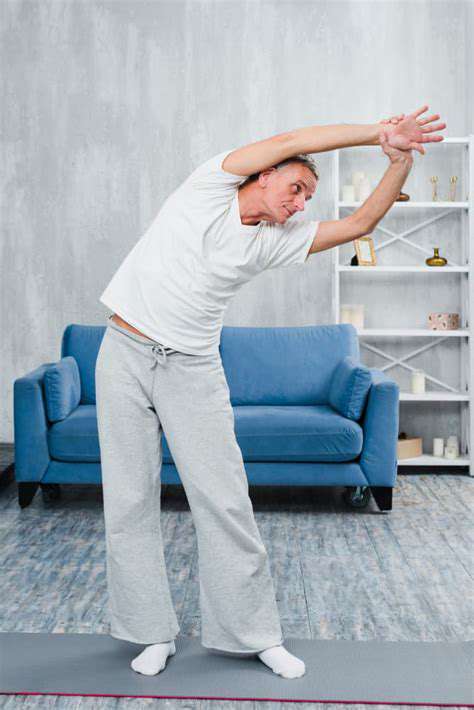
Personal Protective Equipment (PPE)
Ensuring the safety of individuals working in potentially hazardous environments is paramount. Appropriate personal protective equipment (PPE) is crucial for mitigating risks and preventing injuries. This includes, but is not limited to, safety glasses, gloves, and hearing protection. The specific PPE required will vary depending on the nature of the task and the potential hazards involved. Failure to use the necessary PPE can lead to serious consequences, including eye injuries, cuts, burns, and hearing loss. Proper training on the use and maintenance of PPE is essential for maximizing its effectiveness. Understanding the limitations of the equipment and knowing when to replace it are vital aspects of a safe work environment.
Regular inspections and maintenance of PPE are essential for ensuring its effectiveness. This includes checking for any damage or wear that could compromise its protective capabilities. If any issues are identified, the PPE should be immediately removed from service and replaced with a new, undamaged item. This preventative measure helps to prevent accidents and maintain a safe working environment for everyone involved.
Environmental Hazards
A thorough assessment of the work environment is critical for identifying and mitigating potential environmental hazards. These hazards can include things like exposure to dangerous chemicals, excessive noise levels, and potential falls or slips. Understanding the specific risks associated with the work area is vital for implementing effective safety protocols. The use of proper ventilation and containment systems, as well as the implementation of safe working procedures, is needed to minimize the impact of these hazards.
Identifying potential environmental hazards is crucial to creating a safe workplace. This includes factors like the presence of flammable substances, the potential for electrical shocks, and the possibility of exposure to extreme temperatures. Implementing safety protocols and providing appropriate training to employees will help prevent accidents and ensure everyone's well-being. A comprehensive safety plan should cover all possible environmental hazards and outline the necessary precautions to minimize risk.
Emergency Procedures
Having clear and well-communicated emergency procedures in place is vital for reacting effectively to unforeseen circumstances. This involves establishing procedures for responding to fires, chemical spills, and other potential emergencies. A well-rehearsed emergency plan can significantly reduce the impact of an incident and help prevent injuries. Employees should be thoroughly trained on these procedures, including the location of emergency exits, the use of fire extinguishers, and the steps to take in case of an accident. Regular drills and updates to emergency procedures are essential for maintaining their effectiveness.
Knowing how to react in emergency situations is critical for employee safety. Familiarization with emergency response protocols, including evacuation routes, assembly points, and contact information for emergency services, is essential. Proper communication during an emergency is paramount to minimizing harm and ensuring a coordinated response. This includes using clear and concise communication channels to inform everyone involved of the situation and the steps to take.
Safe Work Practices
Adhering to established safe work practices is a critical component of a safe working environment. This includes following established procedures, using appropriate tools and equipment, and maintaining a clean and organized workspace. These practices help minimize the risk of accidents and injuries. Regular safety meetings and the implementation of safety checklists are valuable tools for reinforcing safe work practices. Maintaining a proactive approach to safety through regular reminders and training is crucial for ensuring compliance with safety protocols.
Implementing safe work practices is more than just following procedures. It is about creating a culture of safety where everyone is aware of potential hazards and takes responsibility for their own safety and the safety of others. Continuous monitoring and evaluation of safety procedures, combined with a culture of reporting near-misses and incidents, are essential for continuous improvement. This proactive approach to safety helps prevent accidents from occurring in the first place.
